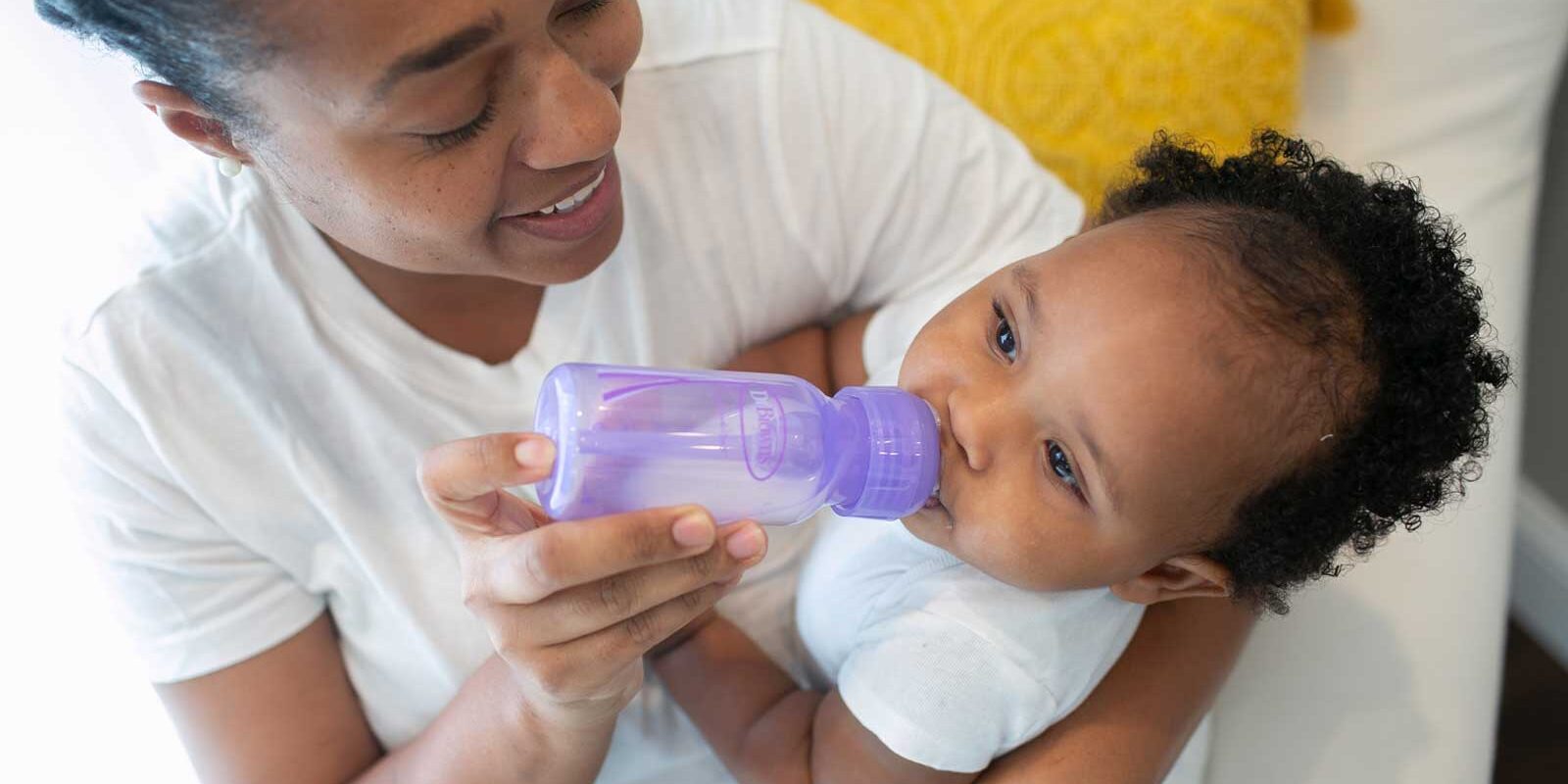Whether you’re using a bottle in addition to breastfeeding or you and baby use the bottle exclusively, certain bottle feeding techniques and positions can give you and baby a happier, healthier bottle-feeding experience. Check out the definitions and pros and cons to each, then speak with your pediatrician, lactation consultant or feeding specialist for advice before making any major changes to your feeding routines.
Bottle Feeding Techniques
Cue-Based Feeding
Cue-based feeding is actually an emerging technique born from hospitals and NICUs, originally for babies who are born premature or with other feeding difficulties. Cue-based feeding may include providing a more controlled (slower) flow rate to help preterm infants’ airways, using an elevated side-lying position with swaddling, pacing the feeding, providing regulatory support to keep baby in an even-keel state, and avoiding moving the nipple in baby’s mouth. The goal for nurses and caregivers is to get preterm and other high-risk babies to a state of “full oral feeding” – where babies don’t have to rely on feeding tubes in order to eat but can feed completely from breast or bottle.
When it comes to healthy, fully developed babies, cue-based feeding can also be employed. It’s simply watching for cues of hunger, cues of feeding problems (like too fast a flow), and cues of fullness. In effect, it’s a completely baby-led way of feeding. It differs from paced feeding in that mom or dad is not controlling the pace of the feeding and when baby is cut off from the milk flow – mom and dad are simply responding to the cues offered by baby.
Potential Benefits of Cue-Based Feeding:
- The quality-over-quantity approach shows improvement in baby’s feeding experience
- Research shows fewer feeding problems and improvement in health
- Increased emotional regulation, speech and language, and fine-motor skills in babies
- Helps baby develop their own understanding of satiety
Things to Think About:
- Feeding schedules are just about impossible to create
- Cues can be subtle, so complete attention is needed to watch baby during feeding
- Parents’ schedules may not be able to support this type of feeding
- Other caregivers may be unaware of this approach to feeding
Bottle Feeding Positions
Cradle Hold Feeding
One of the more traditional bottle-feeding positions, cradle hold feeding consists of placing baby’s head in the crook of your arm and wrapping your hand around his bum. Then, lift your elbow so that baby is at a slight angle, with their head higher than their body. The upside to this position is that it helps prevent ear infection and facial feeding cues are easier to spot – plus it can be done in public. The downside? Your arm can get tired after a 10 – 20-minute feeding session.
Upright Feeding
Upright feeding is just as it sounds: feeding baby when they are sitting upright. This position is best for older babies who have a bit more body control. You can sit them up on your lap and let their body rest against your chest or inside your arm. The upright feeding position is perfect for babies who are dealing with acid reflux or gas (the Dr. Brown’s bottle can help with that, too!) and can be performed anywhere. The con is that baby won’t be facing you, either at all or only partially, making bonding and cue-reading more difficult.
Lap Feeding
With lap feeding, you are either lying down all the way or sitting down and your legs are up and bent at the knees. You place baby with their back against your thighs, facing you, with his head against your knees and feet on your stomach. There’s plenty of bonding opportunity with this position and it gives your feeding arms a break. The only con is that it’s tough to do in public, so you might want to reserve this one for home.
Angled Feeding
Angled feeding is much like the cradle hold, only you aren’t using your arm to support the weight of baby. Instead, you use an angled feeding pillow that keeps baby snug in place against your body but still more upright for improved feeding. The best use of this type of feeding is when baby is going through their cluster feeding frenzy, which can happen to both breastfed and bottle-fed babies. That’s because your arms won’t get tired from frequent feedings and the feeding pillow keeps you feeling cozy.
Paced Feeding
Also called Paced Response Feeding, this technique mimics breastfeeding. Check out Dr. Mona Amin’s article How to Feed Baby a Bottle Using Paced Feeding to learn more!
As bottle feeding techniques and positions continue to improve, so, too, will your baby’s feeding experiences. Again, make sure to speak with your LC, pediatrician or feeding specialist before making changes to your feeding routines. For further Happy Feeding™ reading and more, check out the rest of the articles on our Parent Resources and Tips page!
